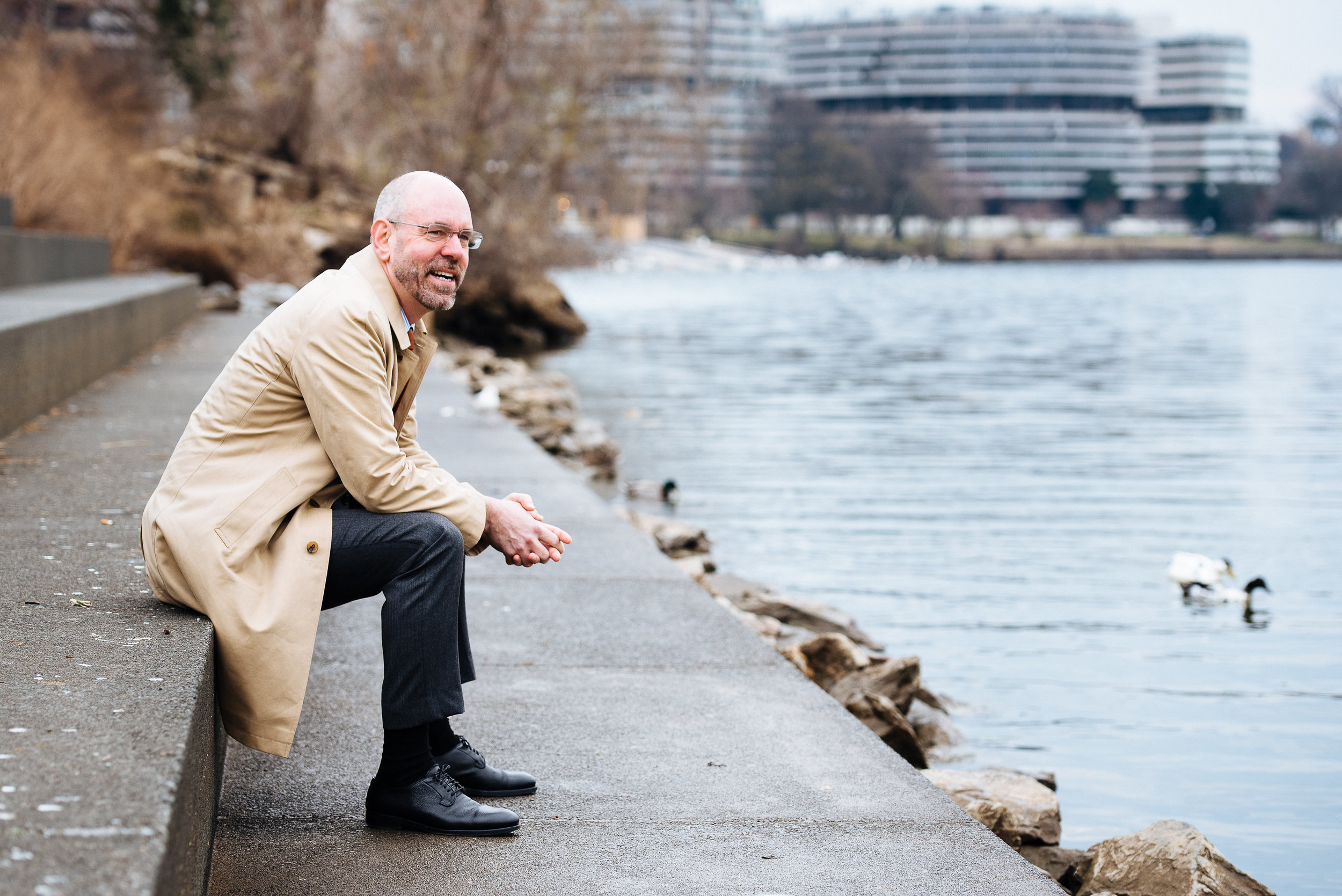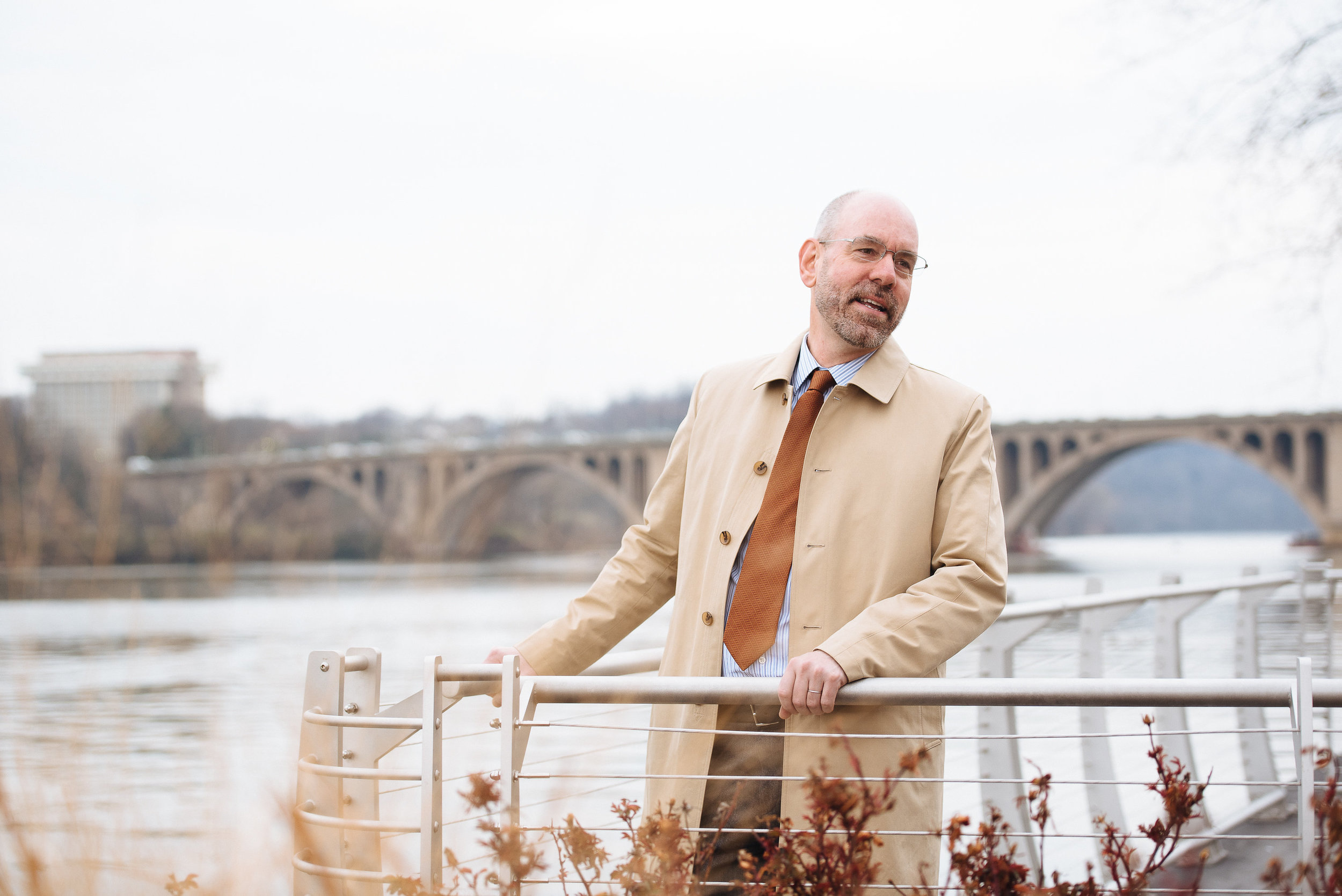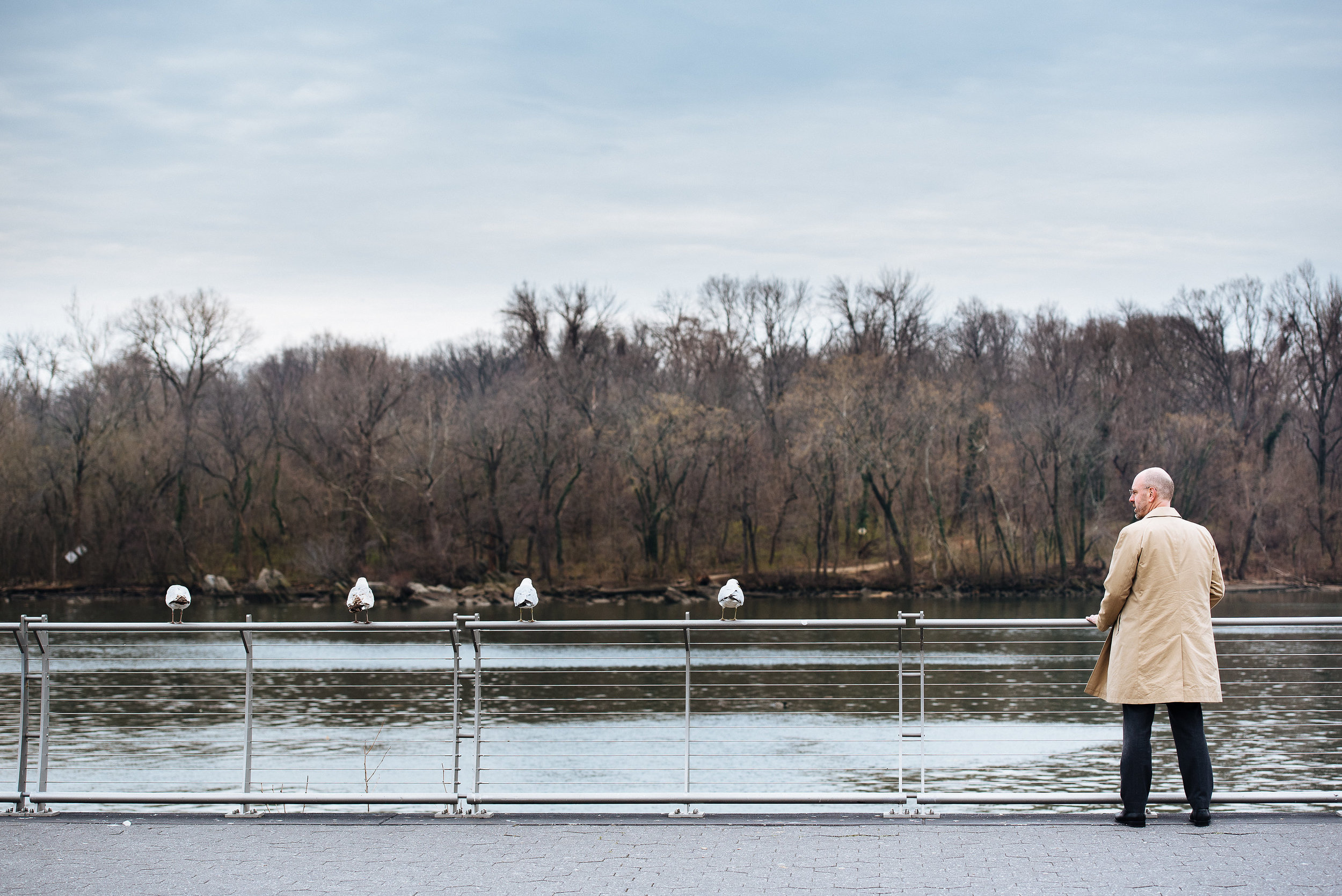‘I Think Georgetown Has a Unique DNA’
It’s 5 a.m. The river is quiet, the sun still hidden.
Uwe Brandes has once again earned the unofficial title of Father of the Year, dropping his daughter off for crew practice on the Potomac.
Despite the early morning, it’s his favorite time of day to walk through Georgetown Waterfront Park—once nothing more than a neglected parking lot underneath the Whitehurst Freeway.
‘The whole transformation was really extraordinary because it was largely citizen-led,’ says Uwe, an urban planner and founding executive director of the Masters Program in Urban and Regional Planning at Georgetown University, who 15 years ago served on the original selection committee for the architects of the park. ‘This was not a grand vision from above. The design of the park and how it’s used follows the vision that so many neighborhood activists advanced. It is a collective achievement.’
Today, that vision is alive in every corner of the park; children running through the fountain on Saturday mornings, office workers eating lunch, couples walking along the water at night.
‘The Georgetown waterfront did not historically support passive recreation. Today you see college kids, people coming in from the suburbs, elderly people—all enjoying the park at once. It’s amazing to see so many people just hanging out.’
Amazing, but just the start.
‘Now we need to think even bigger about what can happen here. We have to think more about livability, connections and what I call ‘urban repose’. What’s exciting about the park is that Georgetown is not just a local neighborhood, it’s a resource that many folks from across the entire region like to enjoy. The idea of the Georgetown waterfront as the crossroads of many different recreation activities is very powerful. Biking, running, strolling, kayaking, fishing, regattas and so on. It’s all here.’
In a previous job, Uwe was also responsible for conceptualizing Yards Park, and says the collection of new waterfront parks in the District—including the upcoming parks and esplanades in Southwest—will create a series of high-quality civic destinations in the city. Rather than competition, Uwe says they’ll actually enhance Georgetown, as tourists and residents begin to ride their bikes, stroll, or take water taxis between each waterfront park.
This civic activation is one aspect of a much broader strategy of urban place-making in Georgetown.
‘A lot of people think about place-making as buying attractive trash cans, planting flowers and introducing a few elements of public art, but it’s transcended all of that,’ Uwe says. ‘Georgetown is at the leading edge of this idea of thinking about place not just in terms of the people who live in the neighborhood and responding to their concerns, and not just in terms of making investments like new parks or streetscapes, but to think about how this place really works. Why do people come, how does it function, how do people relate to one another, how does a place make people feel?
‘There’s a real question about what the economy of a neighborhood can and should be. Thinking about those big questions through the lens of a specific place—this is what I consider to be place-making.’
Uwe believes the Georgetown Business Improvement District has become a global leader in place-making by redefining what proactive neighborhood leadership can and should look like. Today, that includes pushing engagement to include creative arts, public arts, creativity, and innovation in general—all of which Uwe envisions along the waterfront.
‘People are very interested in the question of ‘what is possible?’ and they want to see it and touch it and interact with it. The historic assets in the neighborhood inspire people to come here. There is a lot of awe associated with seeing these beautiful buildings, and the neighborhood has a special role to play in capturing that and translating it into a forward-looking dialogue between all kinds of different people.’
It’s a balancing act for a neighborhood older than the city itself. Some weeks, Uwe finds himself in Georgetown every single day, observing the push and pull of a place both rooted in history and branching out.
And that, for Uwe, is the key—maintaining the balance.
‘Georgetown is at the heart of our teeming, vital metropolitan region. It’s at the center of so many different kinds of activities, but its character has a DNA that’s different than both the planned city of Washington and all of the suburbs that surround it. It is different and it needs to think of itself as different, and harness that difference to be a great place for all.’
Uwe runs through the park before sunrise, seeing kids from across the region—including his own daughter—rowing on the Potomac. It's not just a place, but a great place, he had a role in making.




